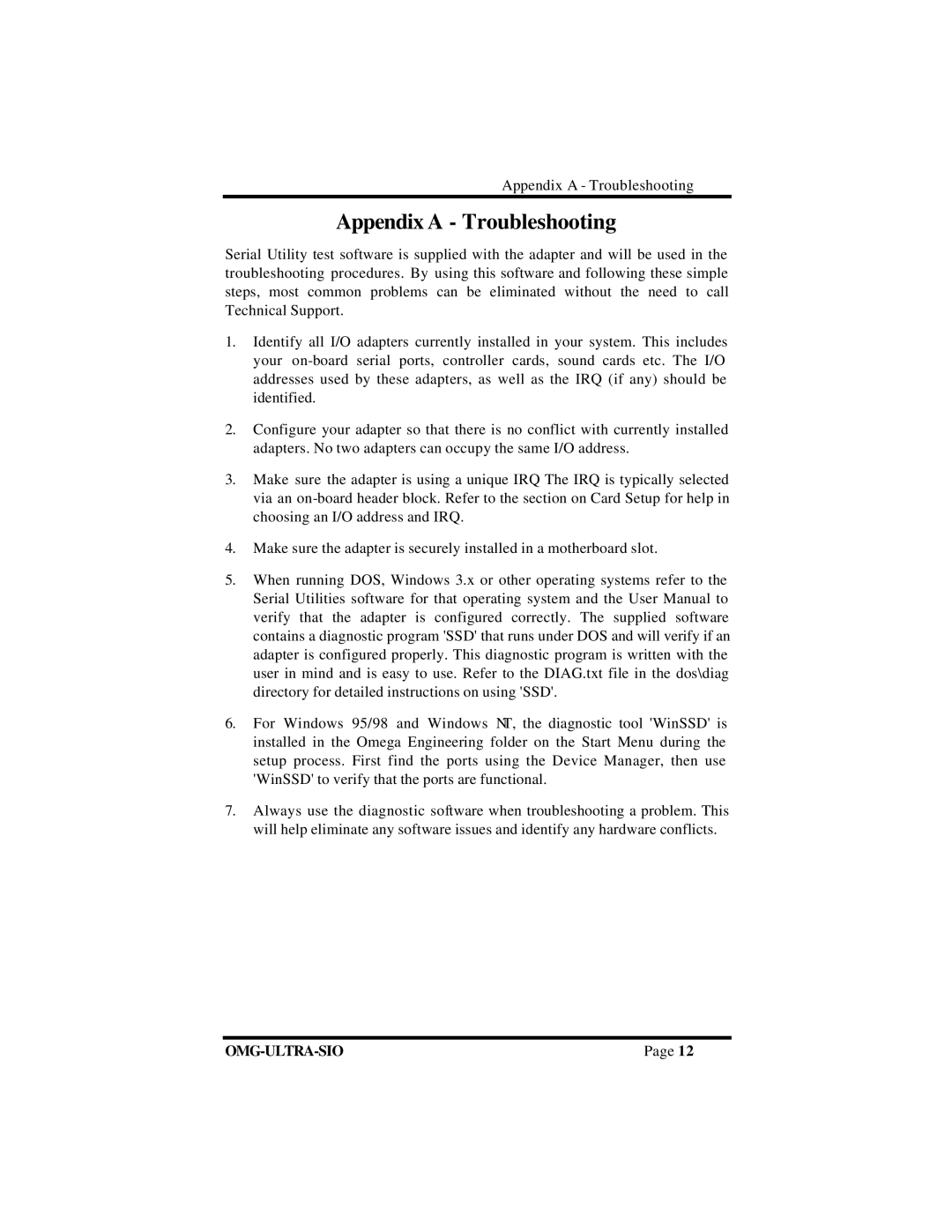
Appendix A - Troubleshooting
Appendix A - Troubleshooting
Serial Utility test software is supplied with the adapter and will be used in the troubleshooting procedures. By using this software and following these simple steps, most common problems can be eliminated without the need to call Technical Support.
1.Identify all I/O adapters currently installed in your system. This includes your
2.Configure your adapter so that there is no conflict with currently installed adapters. No two adapters can occupy the same I/O address.
3.Make sure the adapter is using a unique IRQ The IRQ is typically selected via an
4.Make sure the adapter is securely installed in a motherboard slot.
5.When running DOS, Windows 3.x or other operating systems refer to the Serial Utilities software for that operating system and the User Manual to verify that the adapter is configured correctly. The supplied software contains a diagnostic program 'SSD' that runs under DOS and will verify if an adapter is configured properly. This diagnostic program is written with the user in mind and is easy to use. Refer to the DIAG.txt file in the dos\diag directory for detailed instructions on using 'SSD'.
6.For Windows 95/98 and Windows NT, the diagnostic tool 'WinSSD' is installed in the Omega Engineering folder on the Start Menu during the setup process. First find the ports using the Device Manager, then use 'WinSSD' to verify that the ports are functional.
7.Always use the diagnostic software when troubleshooting a problem. This will help eliminate any software issues and identify any hardware conflicts.
Page 12 |
